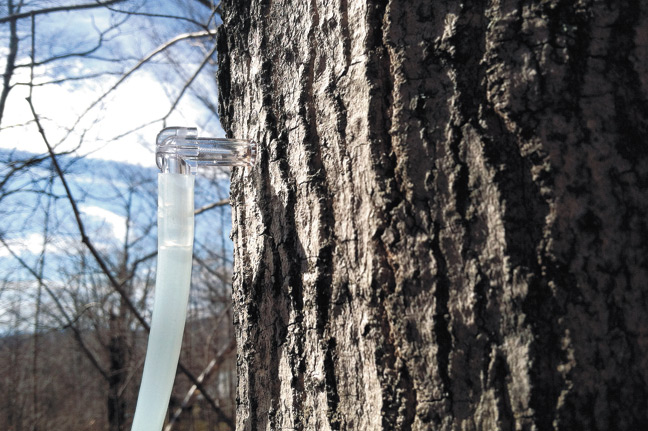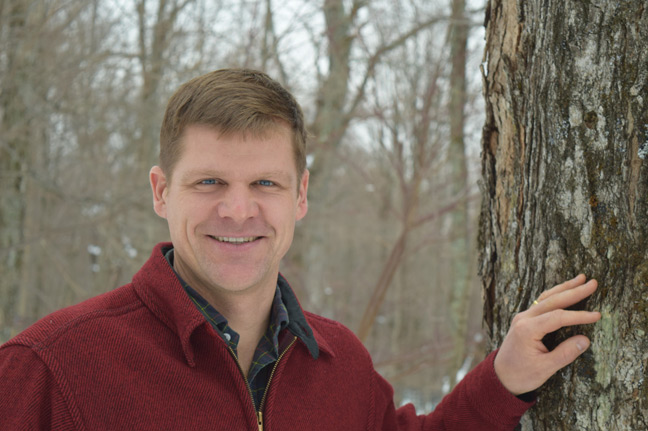BACK TO HOME
UVM Proctor Page

Proctor comes out with long awaited new tapping guidelines
By Abby van den Berg, Timothy Perkins, Timothy Wilmot, and Mark Isselhardt |
Each year, tapping for sap collection permanently removes a small portion of wood where the spout is inserted. The tree’s response to the wound also results in a column of wood extending above and below the taphole that remains permanently nonfunctional for water transport and future sap collection. Sap collection also removes a portion of the tree’s carbohydrate (sugar) reserves, which are important for supporting the tree’s growth and health. [ MORE ]

Gravity Tubing Experiments — April 2013
Tim Wilmot |
Year 4 of gravity tubing experiments in Underhill, Vermont. This line of 3/16 tubing has 37 taps. [ MORE ]

Exciting new spout research at Proctor continues this season
Timothy Perkins |
Researchers at the UVM Proctor Maple Research Center are working on a prototype spout and stubby combination designed to separate the sap from the gases released by the tree in order to maintain a high level of vacuum at the taphole. [ MORE ]

3 years of research looks at gravity tubing
Tim Wilmot, University of Vermont |
Many maple producers consider gravity tubing, or tubing without the use of a pump, to be a poor substitute for a modern system with a pump, extractor, and the latest tubing arrangement. [ MORE ]

Grant awarded to examine tapping practices
Paul Post |
To Tim Perkins, maple tapping is kind of like taking out a loan.
You can opt for high yield now on smaller trees and wind up paying high “interest rates” or adopt more sustainable practices with a tree’s long-term health in mind that will keep it productive and profitable for decades to come. [ MORE ]

#58, Top Performer
Doug Whynott |
Emerson College professor Douglass Whynott has been working on a book about the maple industry for two years. He has traveled extensively throughout the maple belt collecting stories. This is an excerpt. His book was published by DeCapa Press in 2014. [ MORE ]

Isselhardt appointed as maple specialist
Timothy D. Perkins |
Mark Isselhardt appointed to position of University of Vermont (UVM) Extension Maple Specialist.
Mark will be based at the UVM Proctor Maple Research Center in Underhill Center, where he has been employed for the past 12 years, first as a maple research technician and for the last three as a research specialist. [ MORE ]































